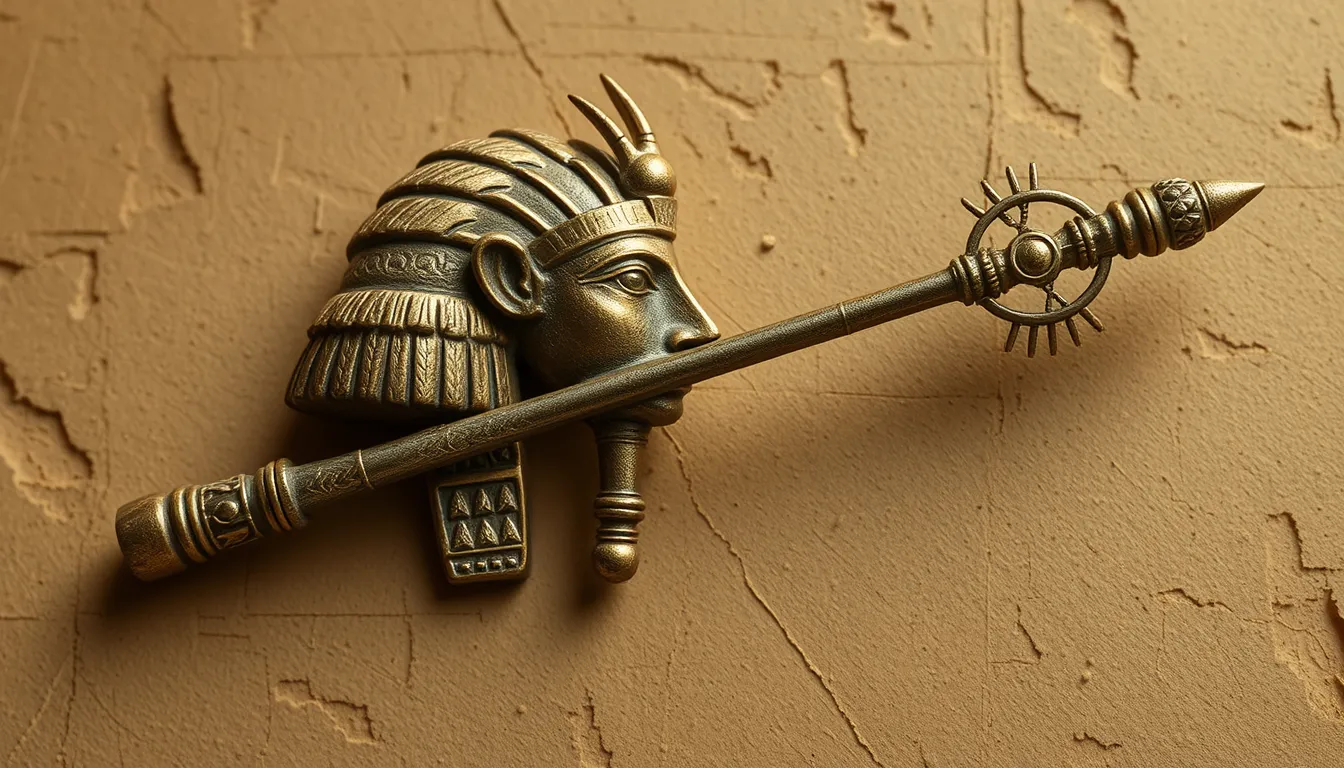The Significance of the Sacred Staff in Egyptian Worship
I. Introduction
Ancient Egyptian religious practices were rich and multifaceted, deeply woven into the fabric of daily life and governance. Central to these practices were various symbols and ritual objects that held profound significance. Among these, the sacred staff emerged as a powerful emblem of authority, divinity, and protection.
This article explores the sacred staff’s role in ancient Egyptian worship, delving into its historical context, symbolism, and usage in various rituals and artistic representations. By examining the sacred staff, we gain insights into the broader spiritual landscape of ancient Egypt.
II. Historical Context of Egyptian Worship
The ancient Egyptian religion was polytheistic, centered around a pantheon of deities who governed various aspects of life and the natural world. Key deities such as Ra, Osiris, and Isis were worshipped through elaborate rituals that included offerings and ceremonies performed in temples.
Ritual objects played a crucial role in these worship practices. They were believed to facilitate communication with the divine and were often imbued with spiritual significance. The sacred staff, among these objects, served as a vital tool for priests and pharaohs alike.
III. The Sacred Staff: Definition and Description
The sacred staff, also known as the “was” scepter, is characterized by its distinctive design, typically featuring a long shaft with a forked or stylized head. This shape often symbolizes authority and power.
- Physical Characteristics: The staff usually measures several feet in length and is often adorned with intricate carvings or inlays.
- Materials and Craftsmanship: Sacred staffs were commonly made from wood, though some were crafted from precious metals or stone. The craftsmanship involved meticulous detailing, reflecting the high status of the owner.
- Variations Over Time: The design of the sacred staff evolved through different periods of Egyptian history, with changes in style reflecting cultural shifts and influences.
IV. Symbolism of the Sacred Staff
The sacred staff held deep symbolic meaning within the context of ancient Egyptian worship:
- Representation of Authority: The staff was often associated with kingship and leadership, representing the ruler’s power over the land and its people.
- Connection to Divine Protection: It was believed that the staff provided divine guidance and protection, serving as a conduit between the earthly realm and the gods.
- Pharaoh’s Role in Religion: For pharaohs, the sacred staff symbolized their unique position as intermediaries between the gods and humanity, solidifying their divine right to rule.
V. The Sacred Staff in Rituals and Ceremonies
The sacred staff was integral to various rituals and ceremonies in ancient Egypt:
- Temple Worship: During temple ceremonies, priests would wield the sacred staff to invoke the presence of the gods and facilitate offerings.
- Funerary Practices: In funerary contexts, the staff was often placed in the tomb as a symbol of the deceased’s connection to the divine and their journey to the afterlife.
- Festivals and Public Ceremonies: The staff played a central role in festivals, where it was used in processions and rituals that honored the gods and celebrated the cycles of life.
VI. The Sacred Staff in Art and Iconography
The sacred staff was a prominent motif in Egyptian art and iconography:
- Hieroglyphics: The staff is frequently depicted in hieroglyphic inscriptions, often representing power and authority.
- Sculpture and Reliefs: Many sculptures and reliefs showcase deities and pharaohs holding the sacred staff, reinforcing its significance as a symbol of divinity and governance.
- Artistic Styles: The style of representation of the sacred staff varied, with different periods showcasing distinctive artistic techniques that conveyed its importance.
VII. Comparative Analysis: Sacred Staff in Other Cultures
The concept of a sacred staff is not unique to ancient Egypt; it appears in various forms across different cultures:
- Similarities: Many ancient religions utilized staffs as symbols of authority and divine connection, such as the caduceus in Greek mythology or the scepters used by monarchs around the world.
- Differences: While the Egyptian sacred staff primarily symbolized both political and religious authority, other cultures may have emphasized different aspects, such as healing or guidance.
- Influence on Neighboring Cultures: Egyptian religious practices, including the use of sacred staffs, influenced neighboring cultures, which adopted similar symbols and practices.
VIII. Conclusion
In summary, the sacred staff is a potent symbol within ancient Egyptian worship, representing authority, divine protection, and the pharaoh’s unique role in mediating between the gods and the people. Its significance extends beyond the ancient world, influencing later interpretations and practices.
Understanding the sacred staff and its role in ancient Egyptian spirituality provides valuable insights into the cultural and religious dynamics of the time. As we reflect on these ancient symbols, we recognize their enduring legacy, offering a bridge to contemporary spirituality and a deeper appreciation of humanity’s quest for connection with the divine.




